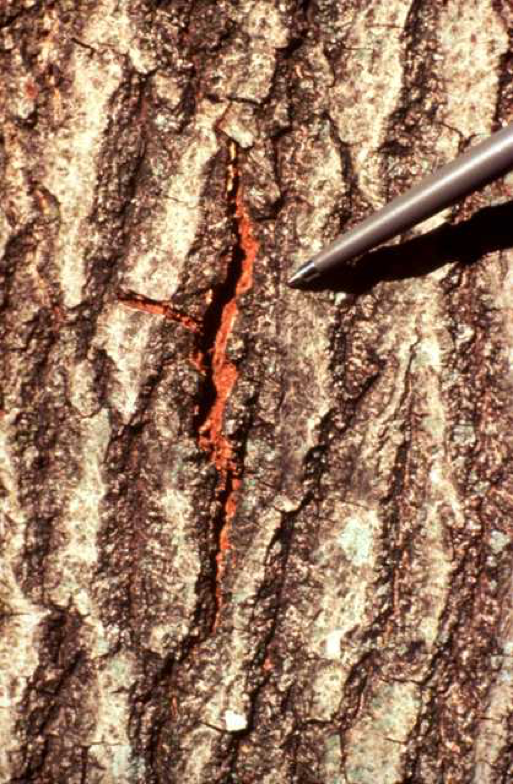Oak wilt is an aggressive and lethal tree disease which has been observed in Ohio for quite a while, and has been spreading in the Greater Cincinnati area over the past year. Madison Tree Care is prepared with preventative solutions and treatments. This article provides an introduction to the threat and what to watch for. Contact us with questions and to schedule our arborists to inspect your trees.
Quick & Deadly — While the mortality rate varies depending on the type of Oak and other conditions, it is typically very high: 85% for Red Oak, and up to 100% for Live Oak, but much less impact on White Oak, which can spread the disease, yet not be significantly harmed by it (think “asymptomatic transmission”). Oak wilt is also a quick killer, with Red Oaks succumbing in a matter of weeks, and Live Oaks surviving only 1-6 months after infection, though some may decline over a year or two before dying.
A Vascular Fungus — Oak wilt is caused by the reaction of specific types of Oak to the fungus Ceratocystis fagacearum. The fungus attacks the water-conducting (vascular) system of the tree, which becomes clogged, which leads to the tree rapidly wilting and dropping its leaves (thus called oak wilt). The disease is usually most active from April through July.
What to look for — Oak wilt can be detected early (before the leaves change) as a gray clump on injured bark called a "pressure pad." It also splits the bark. Red Oak leaves can turn brown and dry quickly, in as little as a week, starting from the outer portions of the limbs, then moving inward, like an early Autumn effect, and be dead within two weeks. After a tree has died, the trunk may form fungal mats (spore-producing structures) under the bark. Firewood can also form fungal mats. Live Oaks appear thin and yellowish from a distance, usually with significant leaf loss.
How does it spread? — Oak wilt is an aggressively spreading disease which is easily transmitted through the ground by root grafts to surrounding trees, expanding by a radius of 75-150 feet per year, and by release of the spores from the fungal mats, which are carried by Sap Beetles to nearby trees. The fungal mats give off a noticeably sweet, fruity odor, so if you think you smell Juicy Fruit Gum when out in your woods, you may be detecting a sick tree.
Treatment and Prevention — Summer months are most deadly, due to the heat enabling the disease to spread and kill quickly, but diagnosis, treatment and prevention are able to be conducted year round. Autumn and Winter are ideal for diagnosis and prevention. If some of your trees seemed to be “blighted” or turned “sickly,” brown, or yellowish over the Summer, contact us to schedule an assessment to determine the cause. Although this article concentrated on the spread of Oak wilt, there are, of course, other tree diseases to watch out for. See this recent article…
Our Madison Tree Care Team has over a dozen International Society of Arboriculture (ISA) Certified Arborists on staff, so you can be confident we will accurately diagnose any tree disease for you, and recommend the most effective plan, whether treatment, prevention or a combination, to preserve and enhance your prized trees for generations to come. Contact us today to get started.


